Essential SEO Strategies for Website Growth
Discover the latest SEO techniques and strategies to boost your website's visibility and drive growth with our comprehensive ultimate guide.

Unbelievably, 75% of visitors never browse beyond the first page of search results. This statistic highlights the importance of SEO to enhance your page’s visibility. Having a website is just the start in the digital terrain of today; the true difficulty is getting it visible to your target market.
Digital obscurity and becoming the top results on search engines might vary in their outcomes depending on a well-written plan for search engine optimization. This thorough book will guide you through the key techniques for increasing your website’s growth, covering everything from understanding how search engines operate to creating content that your audience finds relevant.
Appreciating SEO Fundamentals
Unlocking the potential of your website in the ever-changing terrain of digital marketing requires knowledge of SEO principles. Search engine optimization, or SEO, is the process of improving the content, organization, and visibility of your website so it ranks better on Google and other search engines.
Both novices and companies need SEO, as it enables tiny websites to compete with bigger ones, generates natural traffic without depending solely on advertisements, and creates trust by showing at the top of search results. Consider SEO as the craft of making your website alluring to search engines; it’s like digital courting but with algorithms considerably more selective than any person.
SEO plays a crucial role in transforming your website from a stagnant digital space to a bustling hub of activity. Optimizing your website for search engines helps you to effectively persuade them that your “book” merits front stage in the huge digital library.
Search engines operate like meticulous librarians, constantly reorganizing content to match what they believe users want. Their process relies on three key steps: crawling, indexing, and ranking.
- Crawling: Automated bots, known as crawlers or spiders, scan websites and follow links to discover new and updated content. This step is essential for getting your site noticed.
- Indexing: Once content is discovered, search engines store information about your site in their index, making it available in search results.
- Ranking: Search engines determine where your content appears in search results, influencing visibility and credibility.
Understanding these fundamentals is critical for search engine optimization (SEO). By grasping how search engines behave and optimizing accordingly, even smaller websites can compete with larger competitors.
Search engine optimization’s development
From an emphasis on keyword stuffing to a complex discipline stressing user experience, SEO has changed significantly over the years. From basic keyword searches to sophisticated searches requiring more nuanced and relevant answers, this change parallels the larger changes in our interaction with the web.
Webmasters started using keyword meta tags and submitting URLs to search engines in the middle of the 1990s, thereby optimizing their websites. But when search engines like Google developed, the emphasis moved from keyword density to more advanced measures like link equity and user interaction. Emphasizing high-quality, relevant content that meets user intent, SEO nowadays gives a gourmet dining experience for both users and search engines, with top priority.
SEO has evolved significantly since its early days in the mid-1990s. Initially, webmasters focused on keyword meta tags and keyword stuffing to optimize their sites. With the rise of Google, the emphasis shifted to link equity and user engagement. Today, SEO prioritizes high-quality, relevant content that aligns with user intent, creating a richer experience for both visitors and search engines.
Key eras and developments:
- Mid-1990s – Keyword Stuffing: Early search engines relied heavily on keywords and meta tags to rank pages.
- Late 1990s – Link Equity: The emergence of Google and the PageRank algorithm introduced the importance of backlinks.
- Present Day – User Experience: SEO now focuses on mobile optimization, natural language processing, and content quality, ensuring a seamless experience for users.
This evolution shows that effective SEO has shifted from mechanical tricks to a user-centered, strategic approach.
The SEO scene has changed significantly in response to Google’s algorithm tweaks. Together, updates such as Panda, Penguin, Hummingbird, and BERT have pushed the sector toward more complex, user-centric approaches. Panda punished poor-quality material, for example, whereas Penguin focused on spammy link programs. By improving context and semantics, Hummingbird and BERT let search engines better grasp user searches.
- Panda update: Punished farms producing low-quality output.
- Penguin update: Aim for targeted spammy link campaigns.
- I have updated my contextual knowledge about hummingbirds.
- BERT: Improved natural language processing.
Page SEO Techniques
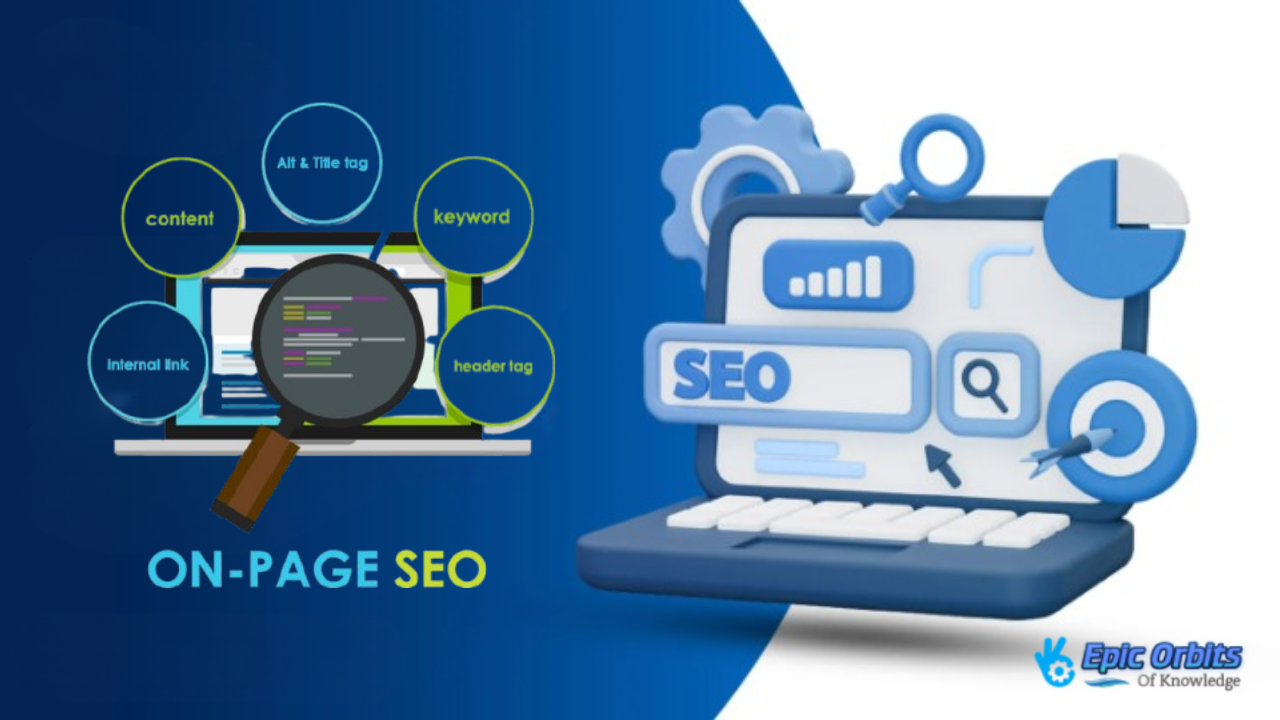
On-page SEO techniques form the foundation of a successful digital marketing strategy. Optimizing certain pages on your website can help increase search visibility, improve user experiences, and increase site traffic.
1. Keyword Study and Application
Any great on-page SEO plan starts with effective keyword research. It entails spotting the words and phrases your target market searches for while looking for material much like yours. Search pertinent keywords using Google Keyword Planner or Ahrefs; then, organically apply them to your page names, headers, and body text.
Modern keyword implementation relies more on strategic placement and organic integration. Steer clear of keyword stuffing, as search engine penalties might follow from it. Rather, concentrate on producing organically occurring content that meets the user’s purpose.
2. Practices for Content Optimization
Search engines as well as consumers depend on content optimization. Make sure your work fulfills user purpose, is unique, and is worthwhile. Enrich the user experience with multimedia components like photographs, videos, and infographics. Use alt text and clear titles to maximize these components and enhance search engine knowledge.
Internal linking is important because it allows search engines to find and rank more of your material. Link relevant pages on your website so that search engines and people may more easily traverse it.
3. HTML Components and Meta Tags
On-page search heavily relies on meta tags, which include meta descriptions and title tags. They provide search engines vital information about your page’s content. Make sure your meta descriptions are captivating to raise click-through rates from search results and maximize your title tags to be clear and striking.
Headers (H1, H2, H3, etc.) are excellent real estate for keywords as well as for content organization. Organize your material using them and emphasize essential terms to help search engines more easily grasp your content hierarchy.
Off-Page SEO Strategies
Off-page Search engine results often overlook SEO. The activities you do outside your website tell search engines your material is worth referencing and valuable.
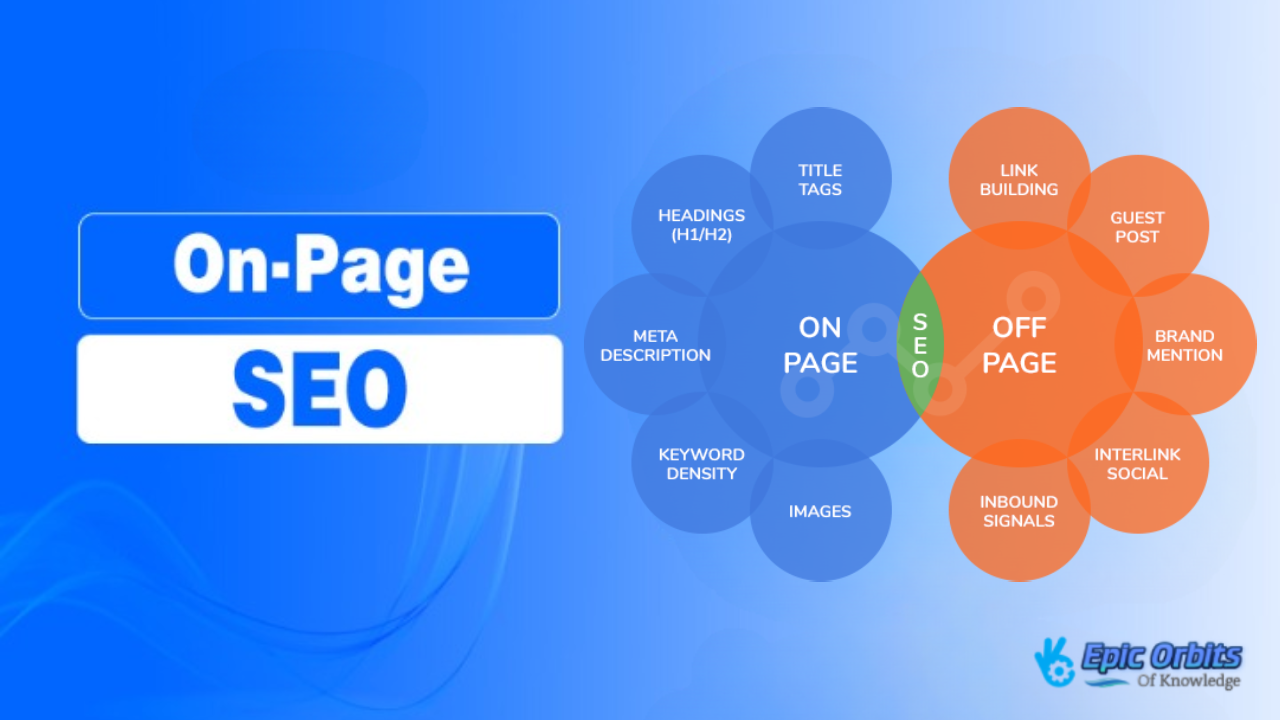
1. Effective Strategies for Link Building
A pillar of off-page SEO, link building entails gathering premium backlinks from reputable sites. Content marketing, guest writing, and outreach help one achieve this. The secret is to provide something so worth-based that other websites cannot help but cite it.
A backlink from a reputable website, such as Harvard’s, has a higher value than multiple connections from low-authority sites. Good link building is about creating cooperative strategic alliances for mutual advantage.
2. Social Signals and Brand Mentions
Although they are not direct ranking criteria, social signals are crucial for increasing the reach of your material and thereby indirectly improving your SEO. You increase interaction and draw possible backlinks by pushing material across many social media sites.
Brand mentions are increasingly important even without direct connections. Search engines are improving their ability to connect your brand name, as it appears across the web, with your actual website, which indicates power and trustworthiness.
Technical SEO Tools
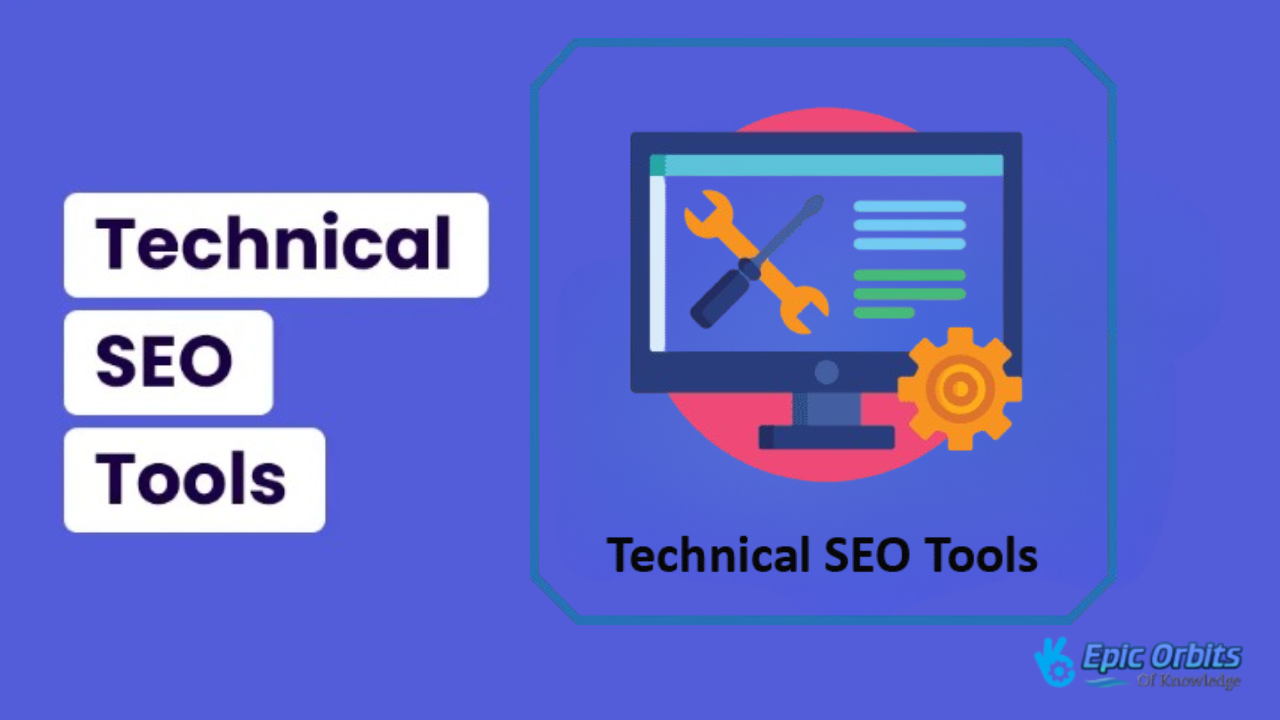
Technical optimization plays a crucial role in SEO by enhancing the attractiveness of your website to both search engines and visitors. Emphasizing site layout, performance, and user experience, technical SEO makes sure search engines can effectively crawl, index, and rank your site.
1. Site construction and crawlability
Search engines need a well-organized site architecture if they are to grasp the material of your website and move around it effortlessly. This process entails building a simple structure with straightforward internal linking and navigation so that search engines may crawl and index your content.
See your website as your digital library. Your website needs a logical framework to let search engines locate and index your material, just as a library has a catalog system to assist people in book searches. Correct crawling and indexing of the pages on your website depend on a clear site architecture.
2. Mobile Improvement and Page Speed
These days, mobile-first, responsive design is not optional. A flawless user experience across devices depends on mobile optimization; hence, page speed is critical. Your search engine results may suffer, and significant bounce rates may result from a slow-loading page.
Focus on Core Web Vitals, including loading speed, interaction, and visual stability, to maximize the page performance of your website. This will improve your website’s search engine rankings and enhance user experience.
3. Structured Information and Schema Markup
Helping search engines to grasp the content of your website depends on structured data and schema markup. Schema markup helps you provide search engines more background on your material, therefore facilitating their indexing and ranking of your pages.
See structured data as a search engine’s cheat guide. It helps them to clearly grasp your material, thereby allowing them to present it in search results in a more relevant manner.
Content Strategy for Successful SEO
A well-crafted content strategy is the keystone of SEO success on the digital terrain. A successful content strategy is about forging a genuine relationship with your audience, not just about appeasing search engines. “Content strategy for SEO is like being a chef who needs to please both the actual diners (users) and the food critics (search engines)—and neither will be satisfied with empty calories.”
1. Writing Material With Ranks in Mind
Creating content that ranks involves understanding your audience’s preferences and presenting it in an engaging, easily readable format, rather than manipulating the system. To achieve this, concentrate on producing worthwhile material with pertinent keywords that meet customer demands. Please ensure your material provides genuine value and is original and accurate. Maintaining your content current and competitive also depends on regular changes.
- Clearly state answers for typical user problems.
- Organize materials using short, scannable paragraphs and well-defined headers.
- Improve material with appropriate infographics, videos, and photos.
2. Content Styles Motivated by Traffic
Different content formats are like different meals in your digital restaurant; some viewers desire the whole course experience of thorough guides, while others want the instant gratification of listicles. Visual materials are essential for your SEO strategy; they serve a purpose beyond mere decoration. Such different formats, such as photos, videos, and infographics, help to break up content, boost interaction, and provide more ranking possibilities.
“The secret ingredient to content that ranks is not only keywords – it’s addressing user intent so thoroughly Google has no choice but to recognize you as the answer to the question.”
Evergreen content is the foundation of your SEO plan because it provides long-term benefits. Content clusters, meanwhile, tell search engines you are a complete expert on a subject. Your search engine results will rise, and more people will visit your website if you vary your content forms and pay close attention to user intent.
Local SEO techniques
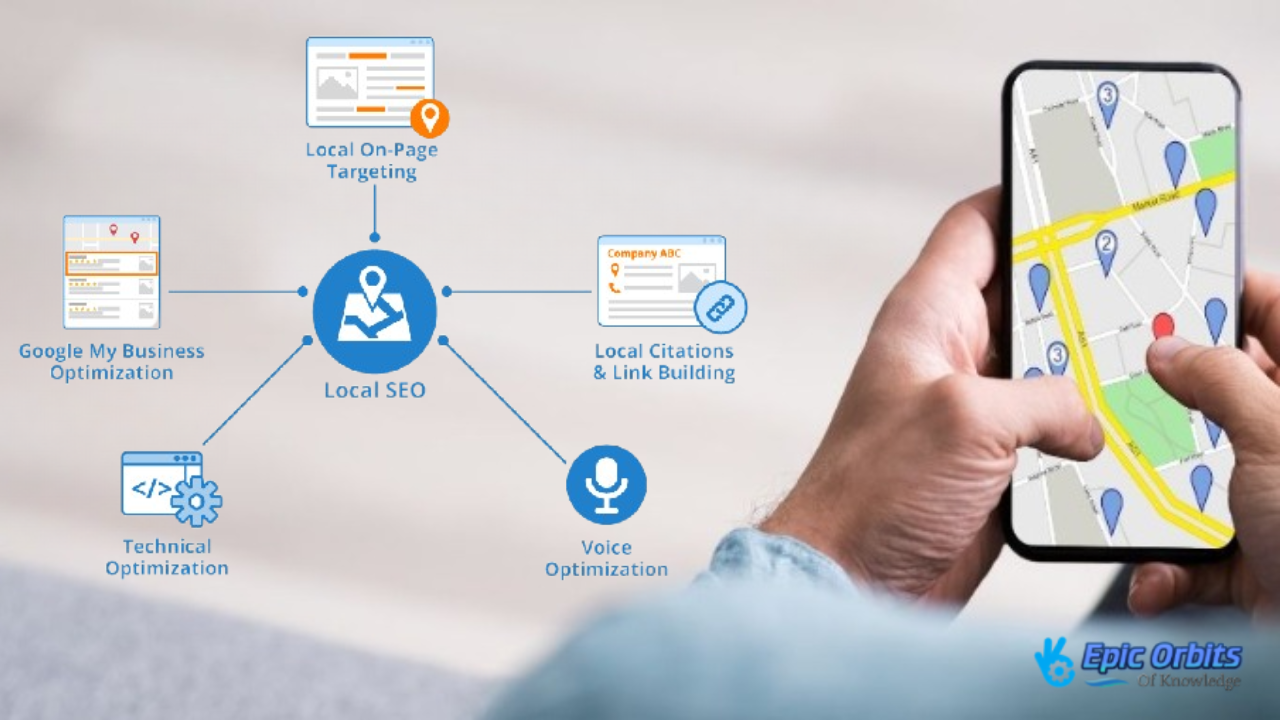
Local SEO is becoming a need for companies with a physical presence rather than a luxury. It’s about ensuring your company comes up for searches by residents looking for goods or services you provide.
1. Improving Google Business Profile
Your Google Business Profile serves as your online storefront. Optimizing it means making sure your company’s data is correct and thorough, adding top-notch images, addressing comments, and regularly publishing updates about your company. Such activity increases your show in search results and helps prospective clients to trust you.
2. Local Citations and Reviews
Building trust with search engines and raising local rankings depend on your company information being consistent across directories, which local citations guarantee. Conversely, reviews provide new material, keywords, and trust signals that could drive your local results. Key tactics for local SEO success include pushing clients to submit reviews and keeping consistent company listings.
Emphasizing these local SEO techniques can help companies raise their online profile, boost foot traffic to their physical stores, and finally boost revenues. In your local digital ecosystem, local SEO is about being near, correct, and renowned.
Evaluating SEO Results
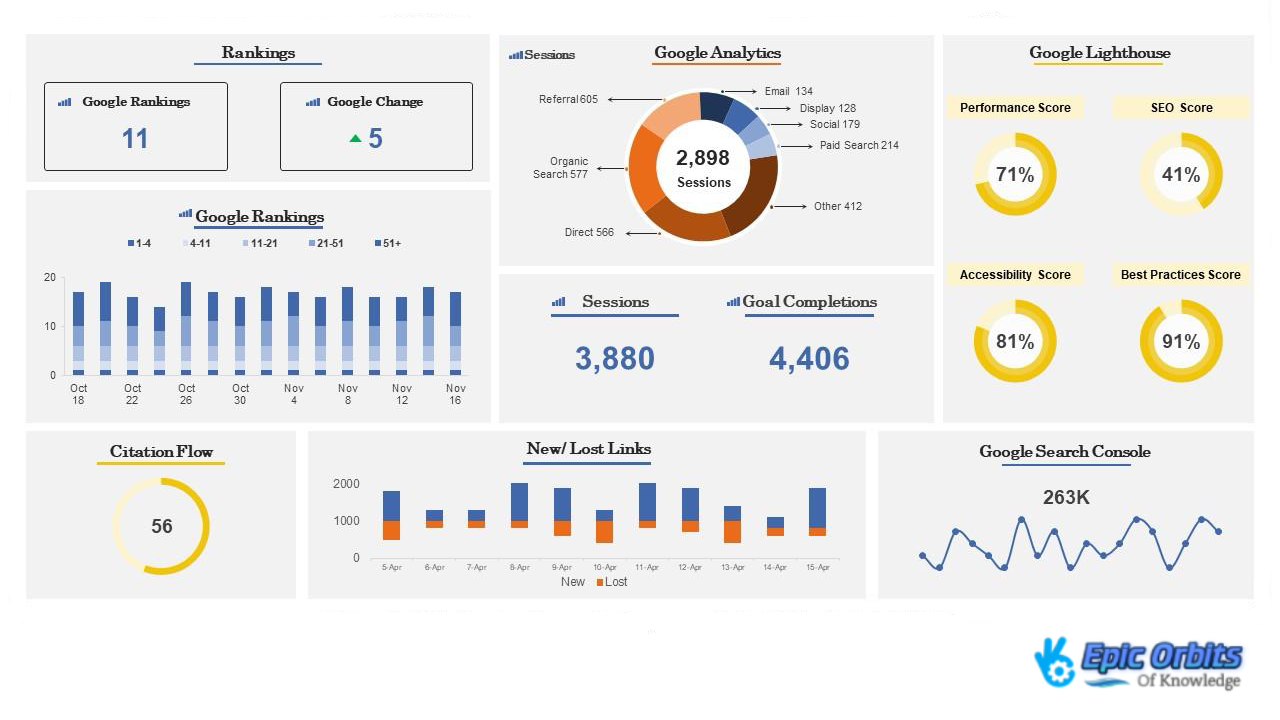
Evaluating SEO performance is the study of many data points to identify areas for development and what is functioning. Reaching higher search engine results and improving digital marketing tactics depend on this approach.
1. Important Measurements to Track
Monitoring important statistics is crucial to evaluate SEO performance. Among them are organic traffic, keyword ranks, click-through rates, bounce rates, conversion rates, and backlink quality. Every one of these measures offers information on many facets of SEO performance.
- While not all traffic is equal, organic traffic plays a crucial role in SEO success.
- Keyword rankings are important indicators of SEO health, showing whether optimization efforts are paying off.
- The click-through rate represents the online equivalent of a storefront’s curb appeal.
2. Tools for Search Engine Optimization Analysis
There are many tools accessible for SEO analysis, each providing special information. Google Analytics helps to grasp user behavior and conversion performance; Google Search Console records site visibility and search performance. Tools tailored to SEO, such as Moz, SEMrush, and Ahrefs, provide thorough analytical capacity.
- Google Search Console offers information on how the search engine sees your website, essentially acting as a direct route to Google’s brain.
- The finest SEO consultants use data to create stories that turn statistics into useful insights rather than just collecting facts.
Modern Search Engine Optimization Strategies
Entering the realm of advanced SEO approaches makes it abundantly evident that keeping ahead of the competition calls for more than simply standard optimization practices. The digital terrain is constantly changing; what was effective yesterday may not be adequate tomorrow.
1. Optimizing Voice Search
Voice search optimization is about being ready for a day when conversational searches will be standard. Focusing on long-tail, conversational keywords, answering directly to inquiries, and optimizing for featured snippets may help you to reach “position zero” on the search engine results page. This approach helps you improve the user experience generally rather than just maximize it for voice search.
2. SEO: AI & Machine Learning
Using artificial intelligence and machine learning in SEO is changing search engine interpretation of content and user intent. This shift emphasizes producing thorough, excellent material that appeals to consumers rather than focusing solely on keyword control. This entails knowing entity-based SEO, in which the relationships between ideas equal the importance of the keywords themselves.
3. International SEO Issues
For companies with worldwide operations, international SEO is very vital. This includes understanding the cultural quirks that influence search behavior, using hreflang tags to specify language and regional targeting, and creating localized content suitable for various markets. It’s not just about translating; it’s about transcreation—that is, modifying your material to fit other cultural settings while preserving your central message and search engine optimization value.
Here are 10 SEO strategies for 2025
We have carefully selected these proven strategies to help you attract leads from prospects.
Combining many strategies helps you to appeal to more people. Still, the ideal combination will rely on the resources and objectives of your company.
1. Leveraging High-Value Content to Draw in and Hold Leads
Creation of excellent material has first priority. Good material draws attention and keeps readers interested, thereby motivating them to remain longer, negotiate further, and finally result in conversions. Let’s look at how valuable material could be your hidden weapon to grab prospects and build credibility.
Your readers will relate to quality material. The reader sees you as just another faceless organization on the internet, not a company that really understands their wants and problems. This process builds your credibility and confirms your commercial knowledge. Once you have their confidence, their inclination to worthwhile material drives them one step further. Whether via insightful blog entries, gripping films, or immersive podcasts, structuring their path with different media makes it more captivating. Gradually, casual guests become interested prospects who are heavily involved in what you have to offer.
Extra effort to produce valuable lead magnets brings visitor involvement to a whole new level. See lead magnets as value-added rewards. They can benefit from templates that streamline their tasks, comprehensive eBooks that delve deeper into their area of interest, or informative white papers that showcase industry trends. This arrangement benefits both parties, as offering these tools in exchange for their contact details encourages people to sign up.
The foundation of good lead generation is a systematic strategy to produce and distribute great content specifically to connect with your target audience that builds trust, stimulates interaction, and results in a strong pipeline.
2. Review and rating management for local trust
Local search engine optimization heavily relies on handling consumer feedback and ratings. While responding to negative comments quickly and effectively can help maintain the image of your company, positive evaluations may greatly improve its standing and attract more business. Aim for a regular flow of honest evaluations, as they provide potential clients with social evidence and help reflect positively on the reputation and credibility of your company.
To sum up, efficient web marketing for companies hoping to target certain local areas depends mostly on local SEO. Your local internet presence will be much improved, and more business will be drawn to your Google My Business page if you carefully manage your reviews, use local keywords, and optimize it. Good local SEO establishes your brand as a reliable option in the area and boosts online exposure; therefore, it promotes company development.
3. optimizing social media synergy in line with SEO
Businesses trying to boost traffic and brand reputations now see social media and SEO integration as very essential tools.
Including social media in your SEO plan can significantly expand your company’s online presence and strengthen its reputation. Well-maintained, intriguing social media accounts can significantly improve your search engine results.
Furthermore, a significant source of additional traffic to your company is the hyperlinks that connect your social media accounts to your website. Strategically used, these hyperlinks serve as portals guiding target audiences on social media platforms to visit your website, therefore greatly increasing the traffic on your website.
Social media provides you with the means to showcase the knowledge of your business, engage with your audience, understand their expectations, and concurrently attract a flood of possible clients toward lead generation.
Ultimately, effectively integrating social media with SEO is a potent tool in the arsenal of modern digital marketers. It may increase lead generation, improve audience involvement, and help you expand your web presence.
4. Creating leads by means of successful link-building strategies
In addition to creating excellent content, driving traffic to your website and increasing exposure in Search Engine Results Pages (SERPs) are also beneficial. It entails painstakingly implementing link-building techniques to establish your website as a niche authority.
An essential part of search engine optimization (SEO), link building has great power to raise SERP results. It entails gathering quality backlinks from various websites to your own. These backlinks serve as references for search engines like Google, therefore indicating the credibility and power of your website.
Still, putting effective link-building techniques into use won’t happen quickly. It’s about building an overtime network of premium backlinks. How thus do you approach this?
- Provide excellent, relevant, and original material to which people want to connect. Your chances of obtaining excellent backlinks increase with the caliber of your material.
- Guest posting is Include connections to your website and write for high-authority websites in your field. You get a quality backlink, and they get great material in a reciprocal sense.
- Create a testimonial for a good or service you have used, then link it back to your website. Both sides gain from this approach, which also gives you a quality backlink.
Remember Google stresses backlinks’ quality over their quantity. From the perspective of search engines, having many quality backlinks indicates that your website is dependable and relevant, which can improve your ranking.
5. Analyze your competitors to identify any keyword gaps
Logic dictates that you should investigate competition analysis after generating your keyword list. Knowing your competitors’ keywords can help you find profitable niches you would otherwise miss. List your main rivals first, then search their top-ranking keywords using Ahrefs. These results might extend your keyword approach and enable you to fill in the voids and raise your profile.
6. Targeting User Intent with Particular Keywords
Understanding and accommodating user intent can significantly improve your site’s relevancy and search engine result exposure.
Keyword targeting goes beyond simple ranking for broad keywords like “SEO services.” Although ranking for such keywords is important, emphasizing particular user intent will provide much more qualified and focused leads. Targeting keywords like “SEO services in New York,” for example, lets you specifically meet the requirements and preferences of consumers seeking SEO services at a certain place.
Including user-intention keywords in your material raises the possibility of drawing relevant traffic to your website and helps you to turn visitors into leads and consumers. This focused method guarantees that your material closely fits the searches of consumers, therefore increasing engagement and, finally, more transactions.
Furthermore, focusing on specific user intentions helps you customize your material to fit the particular requirements and problems of your target market. For instance, someone seeking “SEO services in New York” is probably looking for a local vendor who can accommodate their specific location. Optimizing your material with such keywords tells search engines your website is a relevant and credible source for consumers looking for New York SEO services.
Including user-intention keywords in your SEO plan improves the general user experience and helps your site be more visible and ranked. Delivering content that fits user purpose guarantees visitors discover precisely what they are searching for, therefore increasing engagement, satisfaction, and conversions. To drive quality leads and optimize the effectiveness of your SEO activities, you must spend time and effort focusing on specific user intentions with appropriate keywords.
7. Using local SEO’s ability for targeted reach
Attracting your target audience largely depends on using local keywords. Incorporating location-specific keywords into your website’s metadata and content can significantly enhance its visibility to local potential customers. Make sure all of the contact details on your website and Google My Business page are correct and easily accessible to boost openness and confidence. This process confirms the genuineness of your company so that guests feel free to contact you with queries or make purchases.
8. On-Page Element Keyword Optimization
On-page SEO captures the degree to which the content of your website meets search engine criteria. On-page components such as the title tags, meta descriptions, URLs, and alt text should clearly show your chosen keywords. Providing carefully keyword-optimized content ensures that search engines recognize the importance of your website, which will help improve your ranking in search results and attract qualified, interested prospects.
Using careful keyword preparation, round out your SEO campaign. Finding the search patterns of your target audience, evaluating your competitors, and making sure these results are well mirrored in your on-page SEO can help you increase lead capture and exposure.
9. Making Google My Business most suited for local discovery
One essential tool for companies trying to reach a broader, more focused audience is Google My Business. Optimizing your Google My Business listing guarantees that potential clients in your area will simply find your company. This optimization goes beyond just stating your company; it also includes always updating the data, distributing the most recent news, and interacting with your audience.
10. Including pertinent Contact Details and Local Keywords
Attracting your target audience largely depends on the use of local keywords. Including location-specific keywords in the text and metadata of your website can significantly enhance its visibility to potential clients in your area.
Make sure all of the contact details on your website and Google My Business page are correct and easily accessible to boost openness and confidence. Such information confirms the genuineness of your company and guarantees that guests feel free to ask inquiries or make purchases.
Combining Everything: Your SEO Roadmap
Combining technical, content, and off-page factors, a complete SEO approach produces a harmonic plan that promotes results. Beginning with a comprehensive audit to identify areas of strength and weakness and then creating a prioritized strategy to address the most important problems first can help you succeed.
Technical SEO establishes a solid foundation, followed by a content strategy that aligns with user demands and incorporates relevant keywords. While a consistent performance evaluation sharpens your strategy, off-page strategies, such as link development, assist in creating authority.
Consider building an SEO road map as if you were organizing a cross-country road trip; you must know your starting location, destination, and major points of interest. The most effective SEO techniques are those that combine technical components, content production, and off-page methods in harmonic balance. By doing this, you will start a virtuous cycle of development wherein outstanding material gets links, raises ranks, generates traffic, and offers statistics for betterment of the content.
Recall that SEO is an ever-changing process needing constant adaptation and development. Keep adaptable and patient, and concentrate on being the finest response to the inquiries of your audience. Following this advice will help you achieve SEO success in excellent health.



